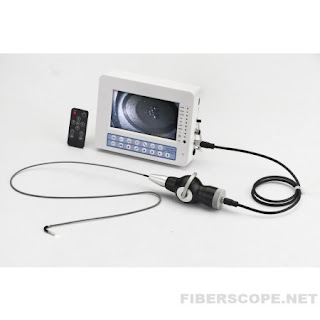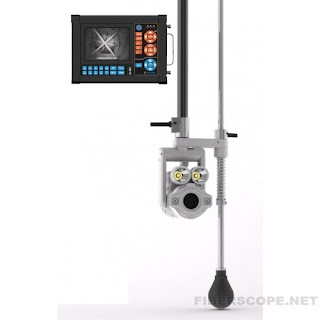While inspecting engines or other equipment there are a wide variety of situations when you might find it necessary to rely on a good inspection camera. Such inspection cameras can couple with different insertion probes, which are convenient in different cases. Finding the best probe for the specific task can be complicating and expensive.
For example, a flexible probe allows observing hidden places which cannot be seen directly. Articulated flexible videoscope can shoot a good video inside closed boxes or hollows. Long flexible probes are significant for inspection of tubes or pipes. But sometimes rigid borescopes are more convenient, because they give a better image at a lower cost compared to a flexible fiberscopes. The image is exceptionally clear. When an object is located within direct access, rigid borescopes are the best. However disadvantages of rigid borescopes include their fragility.
Different tasks require a number of inspection tools: flexible borescopes with various length and diameter, rigid borescopes, video cameras and light sources. Purchasing them separately can be costly and unprofitable. A universal system would be the best way out.
The new inspection camera system ED-Cam from MEDIT is a universal, portable inspection device, which can be coupled with a lot of rigid and flexible probes. Simply change the videoprobes for your specific task.
 This inspection system includes a portable recording hub with a high-resolution color 7" LCD display and a CCD camera with 1.3 Mp resolution. The universal focusable video coupler can be attached to any 32 mm optical (either rigid or flexible) borescope eyepiece. Included IR remote control offers inspection operability.
This inspection system includes a portable recording hub with a high-resolution color 7" LCD display and a CCD camera with 1.3 Mp resolution. The universal focusable video coupler can be attached to any 32 mm optical (either rigid or flexible) borescope eyepiece. Included IR remote control offers inspection operability.
The unit can record still images and video with voice recording to SD memory card or to laptop via USB cable. The display allows to observe every detail.

It is possible to locate the ED-Cam Inspection Camera System to any inspection site even without electricity supply, it can be powered from both rechargeable battery up to 4 hours, or an external power supply. You can see some variants of installation in the pictures.
More details about MEDIT inspection cameras can be found here.
For example, a flexible probe allows observing hidden places which cannot be seen directly. Articulated flexible videoscope can shoot a good video inside closed boxes or hollows. Long flexible probes are significant for inspection of tubes or pipes. But sometimes rigid borescopes are more convenient, because they give a better image at a lower cost compared to a flexible fiberscopes. The image is exceptionally clear. When an object is located within direct access, rigid borescopes are the best. However disadvantages of rigid borescopes include their fragility.
Different tasks require a number of inspection tools: flexible borescopes with various length and diameter, rigid borescopes, video cameras and light sources. Purchasing them separately can be costly and unprofitable. A universal system would be the best way out.
The new inspection camera system ED-Cam from MEDIT is a universal, portable inspection device, which can be coupled with a lot of rigid and flexible probes. Simply change the videoprobes for your specific task.
 This inspection system includes a portable recording hub with a high-resolution color 7" LCD display and a CCD camera with 1.3 Mp resolution. The universal focusable video coupler can be attached to any 32 mm optical (either rigid or flexible) borescope eyepiece. Included IR remote control offers inspection operability.
This inspection system includes a portable recording hub with a high-resolution color 7" LCD display and a CCD camera with 1.3 Mp resolution. The universal focusable video coupler can be attached to any 32 mm optical (either rigid or flexible) borescope eyepiece. Included IR remote control offers inspection operability.The unit can record still images and video with voice recording to SD memory card or to laptop via USB cable. The display allows to observe every detail.

It is possible to locate the ED-Cam Inspection Camera System to any inspection site even without electricity supply, it can be powered from both rechargeable battery up to 4 hours, or an external power supply. You can see some variants of installation in the pictures.
More details about MEDIT inspection cameras can be found here.




